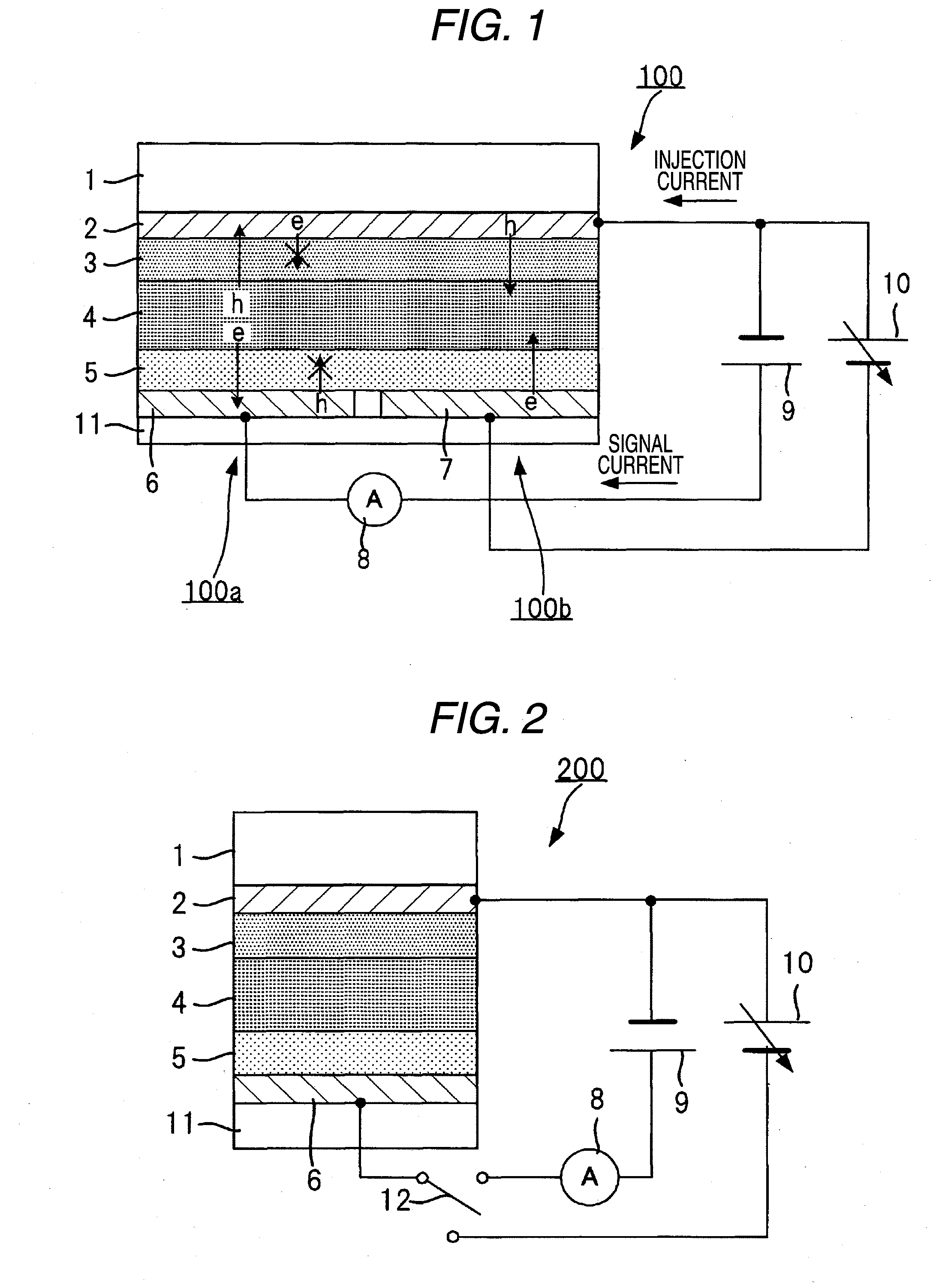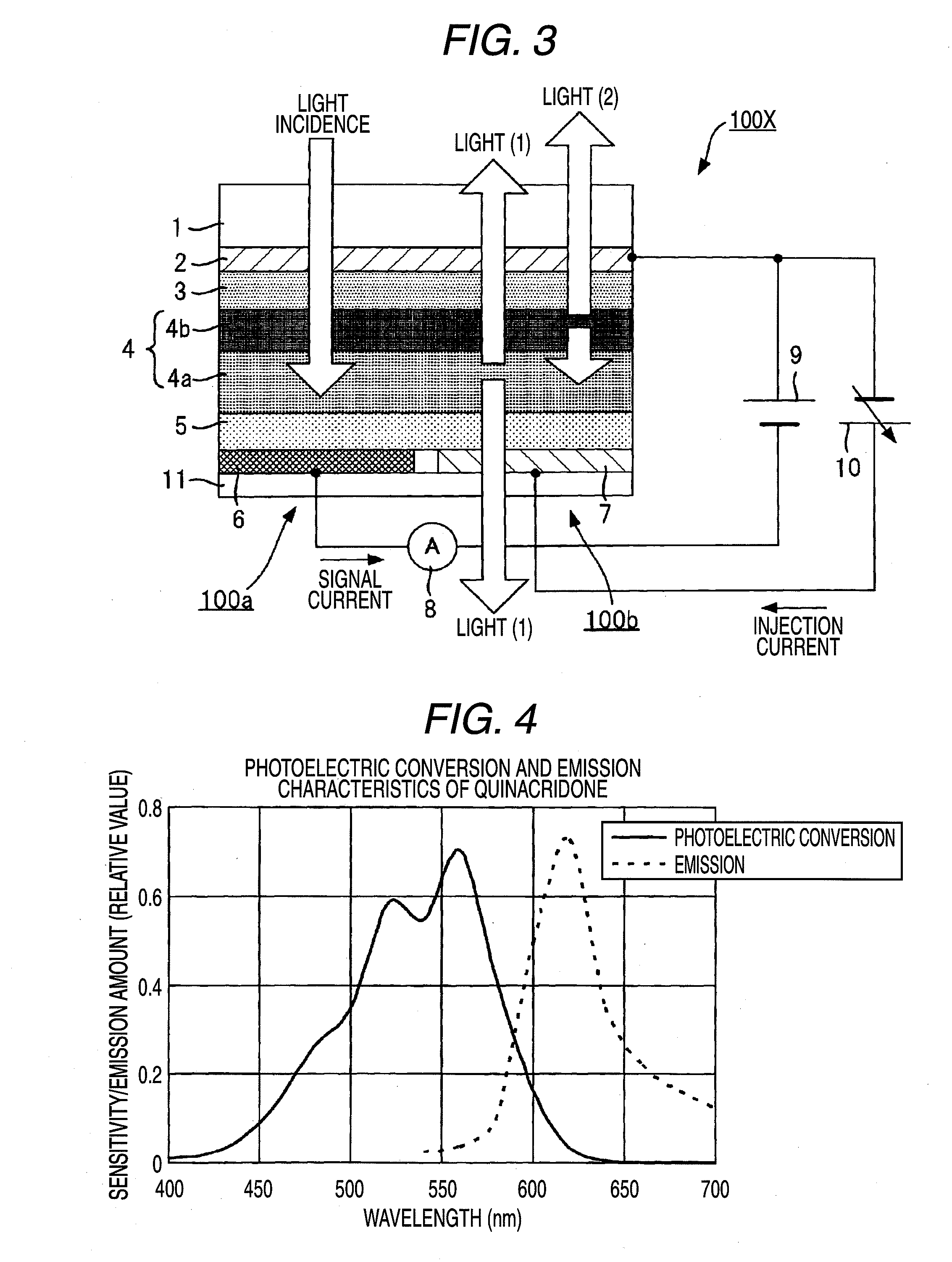Light emitting/receiving element
a technology of light emitting and receiving elements, applied in the direction of diodes, electric discharge tubes, semiconductor devices, etc., can solve the problem that the apparatus cannot be easily produced, and achieve the effect of easy production
- Summary
- Abstract
- Description
- Claims
- Application Information
AI Technical Summary
Benefits of technology
Problems solved by technology
Method used
Image
Examples
first embodiment
[0129]FIG. 15 is a partial sectional diagram schematically showing the configuration of an imaging device of a first embodiment of the invention.
[0130]The imaging device 100Y shown in FIG. 15 includes: a substrate 1Y such as a glass substrate or a semiconductor substrate; an insulating layer 2Y which is formed on the substrate 1Y; a plurality of pixel electrodes 3Y which are arranged one- or two-dimensionally on the insulating layer 2Y; a photoelectric converting layer 4Y which is formed on the pixel electrodes 3Y; an opposing electrode 5Y which is formed on the photoelectric converting layer 4Y; an insulating layer 6Y which is formed on the opposing electrode 5Y; a light emitting element 16Y consisting of a transparent electrode 7Y which is formed on the insulating layer 6Y, a light emitting layer 8Y which is formed on the transparent electrode 7Y, and a transparent electrode 9Y which is formed on the light emitting layer 8Y; a protective layer 10Y which is formed on the transparen...
second embodiment
[0164]FIG. 19 is a partial sectional diagram schematically showing the configuration of an imaging device of a second embodiment of the third aspect of the invention.
[0165]In FIG. 19, components which are similar in configuration to those of FIG. 15 are denoted by the same reference numerals.
[0166]The imaging device 200Y shown in FIG. 19 has a configuration where the opposing electrode 5Y of the imaging device 100Y shown in FIG. 15 functions also as the transparent electrode 7Y so as to omit the light emitting electrode 7Y and the insulating layer 6Y. According to the configuration, the number of wirings from the power supplies 13Y, 14Y, the thickness of the imaging device 200Y, and the loss of light incident on the photoelectric converting layer 4Y can be suppressed.
third embodiment
[0167]FIG. 20 is a partial sectional diagram schematically showing the configuration of an imaging device of a third embodiment of the third aspect of the invention.
[0168]In FIG. 20, components which are similar in configuration to those of FIG. 19 are denoted by the same reference numerals.
[0169]The imaging device 300Y shown in FIG. 20 has a configuration where an electron blocking layer 26Y is disposed between the functional layer 3Y of the imaging device 200Y shown in FIG. 19 and the photoelectric converting layer 4Y, a hole blocking layer 17Y is disposed between the photoelectric converting layer 4Y and the opposing electrode 5Y, an electron transporting layer 18Y is disposed between the opposing electrode 5Y and the light emitting layer 8Y, and a hole transporting layer 19Y is disposed between the light emitting layer 8Y and the transparent electrode 9Y.
[0170]According to the configuration, injection of holes from the opposing electrode 5Y to the photoelectric converting layer ...
PUM
 Login to View More
Login to View More Abstract
Description
Claims
Application Information
 Login to View More
Login to View More - R&D
- Intellectual Property
- Life Sciences
- Materials
- Tech Scout
- Unparalleled Data Quality
- Higher Quality Content
- 60% Fewer Hallucinations
Browse by: Latest US Patents, China's latest patents, Technical Efficacy Thesaurus, Application Domain, Technology Topic, Popular Technical Reports.
© 2025 PatSnap. All rights reserved.Legal|Privacy policy|Modern Slavery Act Transparency Statement|Sitemap|About US| Contact US: help@patsnap.com



